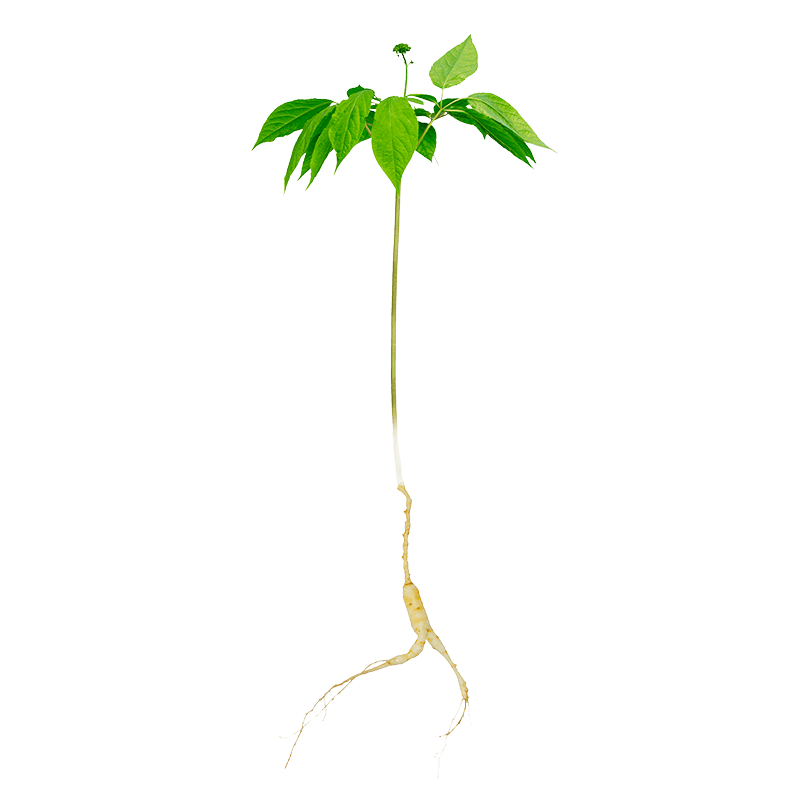Latin name
Eleutherococcus senticosus (Rupr. & Maxim.) Maxim.
Origin
Siberia and northern China.
Used part
The rhizomes.
Active components
Eleutherosides: a complex group of compounds (lignans, sterols, coumarins, saponins) that are responsible for the adaptogenic, stimulating, neuroprotective, hepatoprotective and antioxidant effect.
Polysaccharides: strengthen the immune system.
Polyphenols: antioxidants.
Usage
In traditional Chinese medicine, eleutherococcus or “Ci-wu-jia” is used as a remedy for bronchitis, cardiac conditions, liver diseases and rheumatism. Moreover, the plant is regularly used to support vitality, general health, memory and appetite. Eleutherococcus is rich in antioxidants and thus contributes to resistance against oxidative stress. 1-5 At the same time, it strengthens the immune system and increases resistance, it is therefore used to combat a chill. 6-15 Recent studies have shown that the “Kan jang” complex (the combination of andrographis with eleutherococcus) can successfully be used in a natural approach to winter ailments

